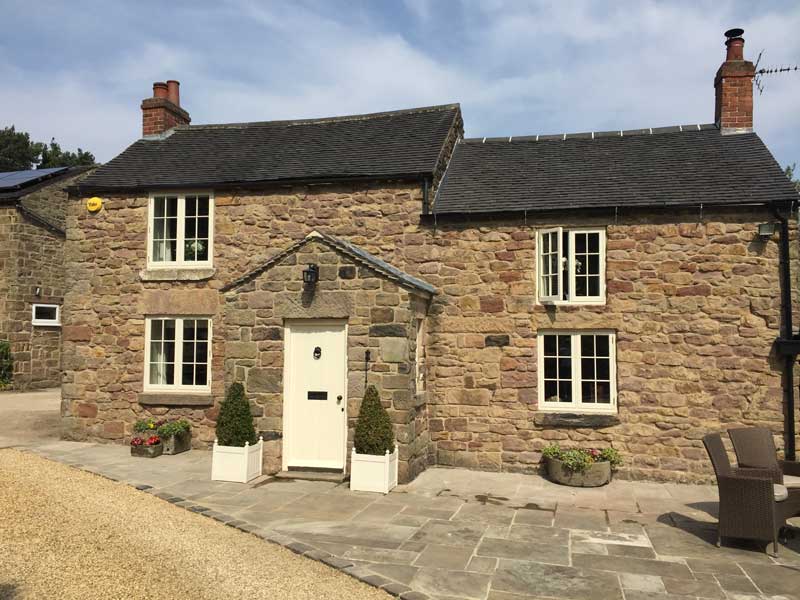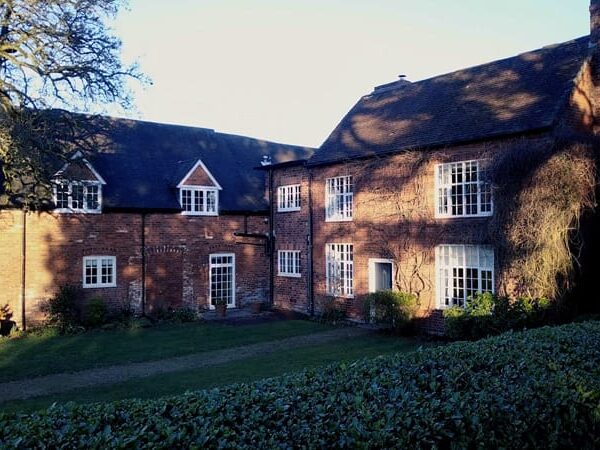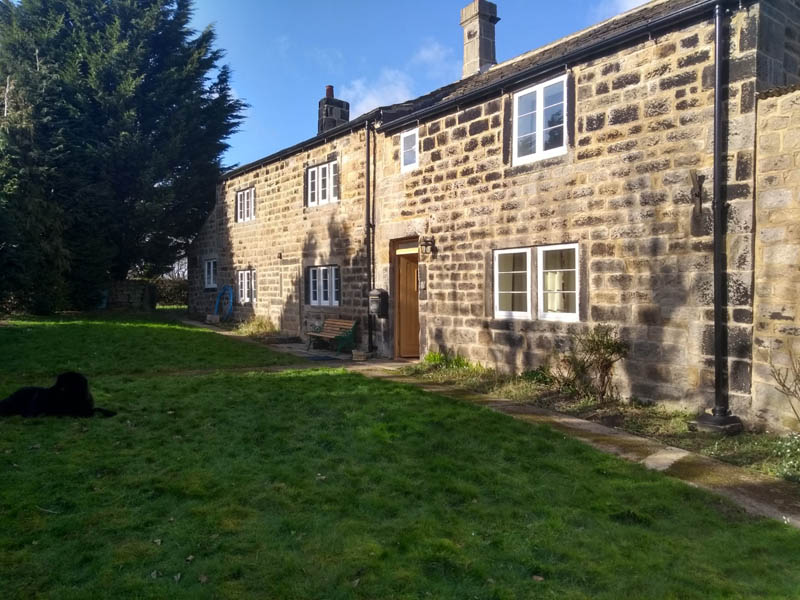How Do Historic Windows Fit into the Historic England Draft?
As the United Kingdom strides toward its ambitious Net Zero by 2050 goal, balancing the need for sustainability with the preservation of historical integrity presents significant challenges. Historic England’s recent “Climate Change and Historic Building Adaptation” draft for consultation attempts to address these challenges by providing detailed guidance. This draft is crucial, especially considering the inconsistencies in recommendations for energy-efficient upgrades across different regions and from one planning officer to another. Upgrading historic buildings for energy efficiency is not only about meeting legislative goals but also crucial for creating a sustainable world that conserves resources, reduces carbon footprints, and preserves our architectural heritage for future generations.
Discover the draft’s key recommendations, their implications for planning permissions, and how Gowercroft Joinery’s Heritage Range aligns with these evolving standards to offer effective, sustainable solutions for heritage properties.
What Is a “Draft for Consultation” and What Are Its Stages to Becoming Legislation?
A “draft for consultation” is a preliminary version of a policy or guidance document issued by governing bodies to get feedback from stakeholders and the public before finalising the legislation.
What stages does a draft for consultation go through before becoming official?
This process usually involves public consultation, revisions based on feedback, approval through governmental bodies, and finally, formal enactment into law.
How does this process ensure that diverse perspectives are considered in shaping effective legislation?
By incorporating feedback from a broad spectrum of stakeholders, including industry experts, property owners, and conservationists, the consultation process ensures that all viewpoints contribute to shaping the legislation. We will be contributing to this, and you can too!
How Does the Climate Change and Historic Building Adaptation Draft Influence Planning Permission for Windows?
The “Climate Change and Historic Building Adaptation” public consultation by Historic England provides essential insights into adapting historic buildings to modern energy efficiency standards while preserving their heritage value. Recognising that “The greenest building is the one that already exists,” and “Maintaining, repairing, reusing, and adapting existing buildings to enable their continued use is, therefore, one of the most effective ways to reduce carbon emissions and unnecessary waste,” this consultation outlines several key recommendations:
How Can We Balance History with Sustainability?
“It is not a question of ‘if’ but a question of ‘how’. Adapting historic buildings appropriately does not just mean reducing carbon emissions and reliance on fossil fuels, it also means adapting buildings in ways that protect historic character.”
“Climate Change and Historic Building Adaptation” draft for consultation
Application to Windows: This guideline emphasises the necessity of choosing window solutions that match historical aesthetics while providing modern energy performance, advocating for the use of innovative solutions that maintain visual integrity.
What Does the Public Consultation Say About the Regulatory Framework for Planning Permissions?
“The HEAN (Historic Environment Advice Note) is aimed primarily at LPAs (Local Planning Authorities), heritage consultants, and other parties directly involved in the planning process.”
“Climate Change and Historic Building Adaptation” draft for consultation
Impact on Planning Permissions: The consultation seeks to clarify and streamline the approval process for adaptations like window replacements, providing clear guidelines that balance heritage conservation with the need for energy efficiency. This helps ensure consistent decision-making across different regions.
How Is Gowercroft Joinery Contributing to the Public Consultation Process?
- Advocacy for Vacuum Glazing and Superior Timber:
Gowercroft Joinery plans to advocate for the inclusion of not only vacuum glazing but also our advanced timber engineering in the consultation. Our Heritage Range windows feature high-quality timber and construction techniques that ensure durability and superior thermal efficiency, crucial for sustainable heritage conservation.
Evidence and Supporting Data: We will present detailed evidence of our windows’ superior U-values, which consistently fall well below the typical thresholds for heritage properties. This data underpins the effectiveness of our windows in significantly improving energy efficiency without compromising the aesthetic integrity of historic buildings.
- Enhancements Gowercroft Joinery Propose for the Public Consultation
Technical Benefits and Aesthetic Compatibility: We will emphasise how our combination of vacuum glazing and advanced timber engineering not only meets but exceeds traditional insulation methods while preserving the historic appearance of windows.
Policy Integration: By recommending the inclusion of our advanced solutions, we aim to ensure the consultation’s guidelines reflect the latest advancements in window technology suitable for historic preservation.
- How Does the Public Consultation View the Role of Historic Buildings in Climate Action?
“The historic environment is under threat from climate change, but it can also be part of the solution.””Climate Change and Historic Building Adaptation” draft for consultation
Gowercroft’s Mission Alignment: This statement underscores the importance of integrating sustainable innovations like our advanced window technologies in heritage conservation, offering methods that significantly reduce energy consumption while safeguarding historical integrity.
By actively participating in the public consultation process, Gowercroft Joinery aims to ensure the guidelines support the use of effective, minimally invasive technologies for enhancing energy efficiency in heritage properties. This involvement demonstrates our commitment to sustainable heritage conservation and aligns with broader national energy goals, facilitating a move towards a more sustainable future.
Why Are Gowercroft’s Heritage Windows Preferred for Historic Properties?
Our Heritage Range has been meticulously designed to meet the stringent demands of historic building renovations, providing an ideal solution for property owners and conservation area managers. This range includes:
- Winston Sliding Sash Windows: Achieving a Whole Window U-Value of 1.12W/m2K.
- Richmond Two-Light Casement Windows: Offering a U-Value of 1.18W/m2K.
Our Heritage range not only exceeds energy efficiency standards but also boast a 98% approval rate in planning applications for listed buildings, demonstrating their suitability and appeal in sensitive architectural contexts.
How Have Gowercroft’s Heritage Windows Been Implemented in Real-World Settings?
Our commitment to enhancing historic properties is best illustrated through our successful projects:
- Colliers Oak Case Study: A showcase of our Heritage Casement Windows, blending seamlessly with the property’s aesthetic while enhancing thermal performance.
- Land End Farm: Our windows provide a perfect example of integrating modern efficiency with traditional design in a rural setting.
- Harvington Hall Farmhouse and Barn Study: Demonstrating how our Heritage Windows respect historical architecture while offering superior energy performance.
- Derbyshire Quarry Cottage Belper: Illustrating the effectiveness of our windows in a challenging conservation environment, enhancing both aesthetics and energy efficiency.



How Does Gowercroft’s Heritage Range Compare to Traditional Window Solutions?
Compared to traditional solutions like single glazing or slim double glazing, Gowercroft’s Heritage Range provides superior thermal insulation and durability. For instance, traditional single-glazed windows significantly underperform in thermal efficiency, while our technologically advanced timber frame windows offer both sustainability and compliance with modern thermal standards, crucial for both environmental impact and cost savings on energy bills. Learn more about the energy efficiency of historic buildings in our article.
Why Is Professional Guidance Crucial When Adapting Historic Buildings?
Historic England advises that adaptations to historic buildings should always be undertaken with professional guidance to ensure that interventions are appropriate and beneficial. At Gowercroft, we provide expert consultation to ensure that each installation is tailored to meet both conservation requirements and modern performance standards effectively.
How Is Gowercroft Leading the Charge in Sustainable Heritage Conservation?
As we advance towards a more sustainable future, the intersection of heritage conservation and energy efficiency presents unique challenges and opportunities. Gowercroft Joinery is committed to spearheading innovative solutions that preserve the historical integrity of cherished buildings while embracing modern sustainability practices. Our approach is reflected through rigorous standards and sustainable practices:
- Life Cycle Assessment: We conduct detailed life cycle assessments to evaluate the environmental impact of our products throughout their lifespan. This comprehensive review helps us improve the sustainability of our windows, from manufacturing to disposal, ensuring they contribute effectively to a circular economy.
- Sustainable Materials: We utilise timber from sustainable sources, ensuring minimal environmental impact.
- Waste Reduction: Through precise ordering and recycling, we minimise waste, repurposing by-products like timber off-cuts for our on-site Biomass heater.
- VOC Reduction: Our commitment to using water-based paints and finishes reduces harmful emissions, enhancing environmental and indoor air quality.
By integrating these environmentally conscious practices, Gowercroft Joinery not only aids in achieving the UK’s Net Zero goals but also ensures that property owners have access to durable, high-quality window solutions that support heritage conservation and environmental sustainability.
How Can You Transform Your Historic Property with Gowercroft Joinery?
Discover how Gowercroft Joinery can transform your historic property into a beacon of sustainability and elegance by viewing our award-winning Heritage Range.

